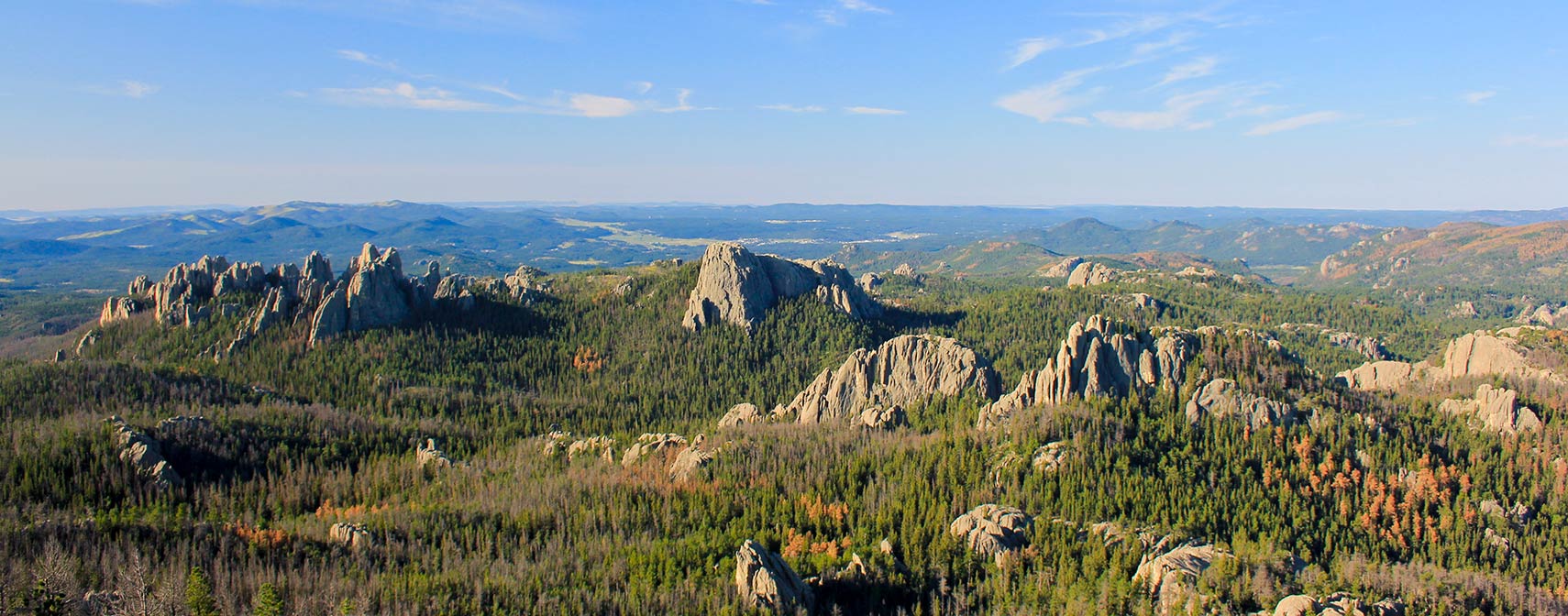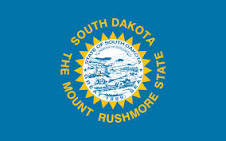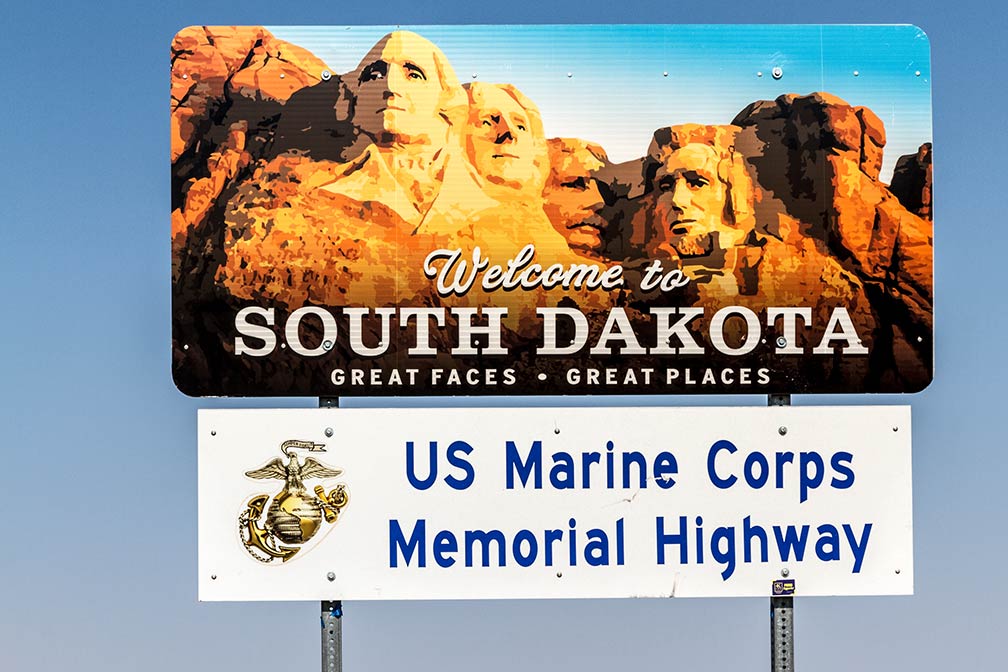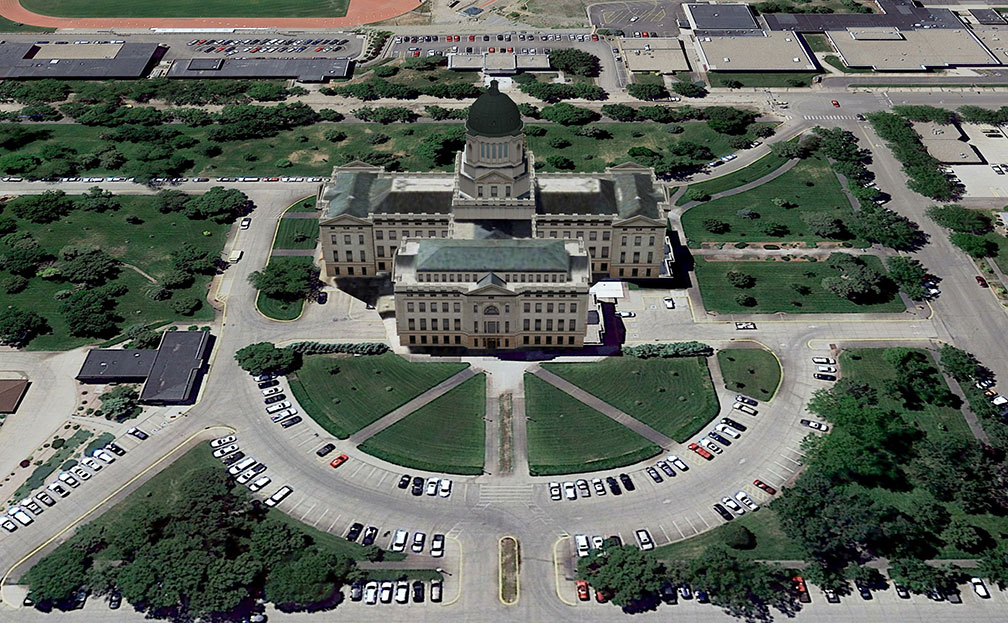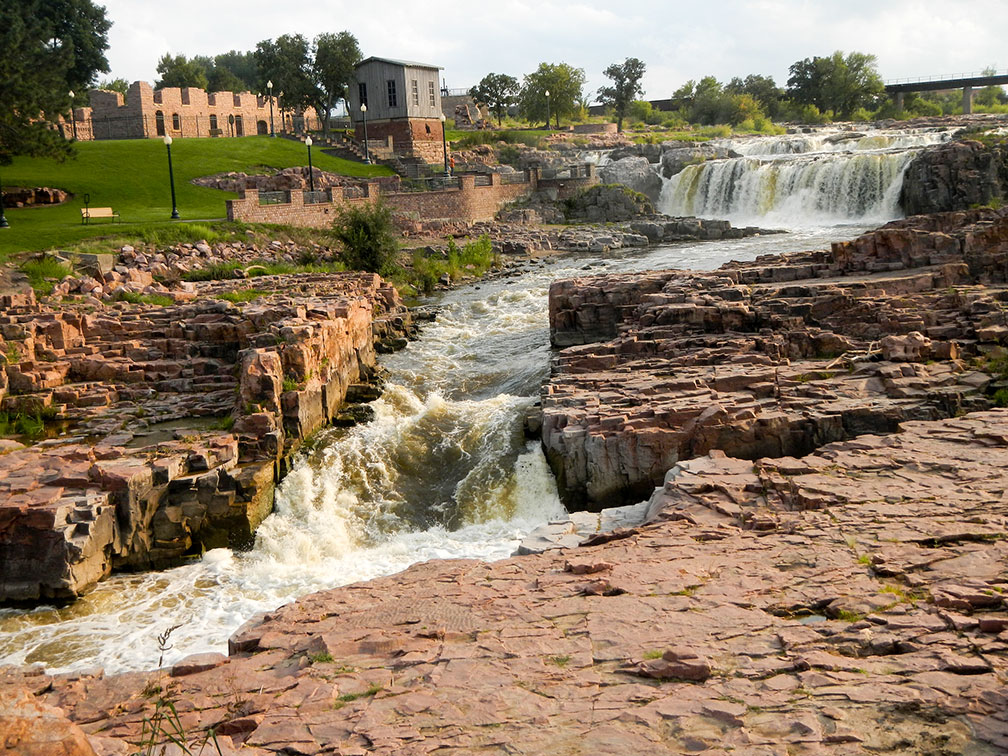 Sioux Falls' main attraction, the Big Sioux River Fall in South Dakota. The building to the left is the replica of the long-gone turbine house for a water-powered wheat-grinding machine.
Sioux Falls' main attraction, the Big Sioux River Fall in South Dakota. The building to the left is the replica of the long-gone turbine house for a water-powered wheat-grinding machine.
Image: PunkToad
The map above shows the location of following cities and towns in South Dakota:
Largest cities in South Dakota with a population of more than 20,000:
Sioux Falls (pop. 174,000), Rapid City (74,000), Aberdeen (28,400), Brookings (24,000), Watertown (22,200)
Population figures in 2017
Other cities and towns in South Dakota:
Belle Fourche, Bison, Box Elder, Buffalo, Canton, Chamberlain, Custer, De Smet, Deadwood, Dell Rapids, Dupree, Edgemont, Faulkton, Fort Pierre, Gettysburg, Hot Springs, Huron, Ipswich, Kadoka, Lake Andes, Lead, Lemmon, Madison, Martin, McIntosh, Milbank, Miller, Mission, Mitchell, Mobridge, Murdo, Olivet, Philip, Pierre, Pine Ridge, Plankinton, Redfield, Selby, Sisseton, Spearfish, Sturgis, Timber Lake, Vermillion, Webster, Winner, and Yankton.

